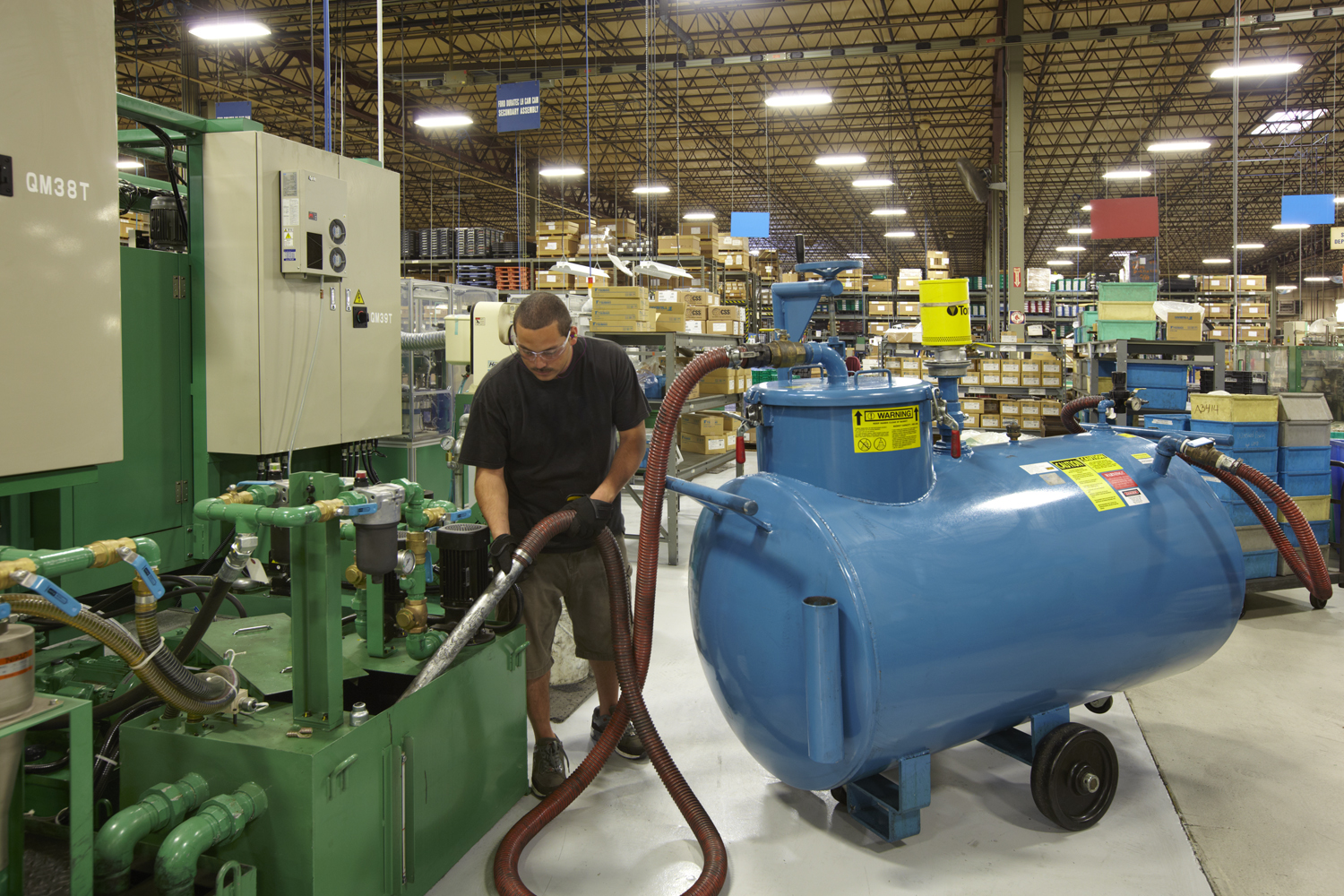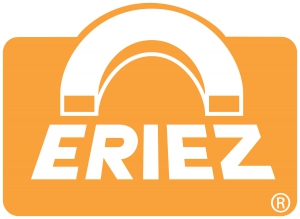By Ron Wendt, product manager of fluid recycling for Eriez
 The metalworking and metal forming industries have taken a leadership role in protecting the environment through an emphasis on fluid recycling and metal recovery. Shop managers understand fluid recycling can be an integral part of their process, just like tooling, inspection and everything else that affects their bottom line. In addition, other managers have developed systems that produce a revenue stream by recycling copper chips.
The metalworking and metal forming industries have taken a leadership role in protecting the environment through an emphasis on fluid recycling and metal recovery. Shop managers understand fluid recycling can be an integral part of their process, just like tooling, inspection and everything else that affects their bottom line. In addition, other managers have developed systems that produce a revenue stream by recycling copper chips.
Save 60% in coolant cost
Coolants have improved significantly over the past and are better than those from 10 or 15 years ago. They last longer, but the cost has also increased. Depending where a business is located in the Unites States, shop managers pay up to $40 per gallon for coolant. Disposal costs can vary, anywhere from 25 cents to $3 per gallon.
A coolant mixture is usually 90 percent coolant with 10 percent water. Companies often end up paying to haul the used coolant away, and then refilling machines with brand new coolant. This adds to the cost of maintaining the equipment.
There is a cradle-to-grave responsibility for a metalworking shop, even if a certified company is hired to dispose of used coolant. If the coolant is not properly disposed, federal and state authorities can come back to the generator of the waste to pay for clean-up costs. This leads to more expense and potential embarrassment.
This is where fluid recycling is valuable. Companies can save up to 60 percent of the coolant concentrate by removing tramp oils and solids through filtration. That is a sizable payback, but there are other factors that contribute to potential return on investment (ROI).
Enhance machine tool performance
Removing tramp oil from the manufacturing process is critical as their removal improves fluid performance and longevity, air quality, bacterial resistance, corrosion resistance and tool life. Removing small fines will lead to better tool life, better parts finish and reduced machine tool wear.
Improve air quality
Removing tramp oil from coolant on a regular basis results in less oil mist in the air, which improves air quality. Keeping the working area cleaner also reduces the amount of slippery moisture on floors and contributes to a healthier atmosphere for shop workers. Fluid recycling can save money, limit liability and increase the health and safety of the individuals in the shop. These are all important benefits to shop managers who pay close attention to dollars. A fluid recycling program also helps companies achieve and maintain ISO 14000 status.
Eliminate bacteria and stench
While most machines have a system to remove a majority of the chips, there are always smaller fines left behind which settle in the tank. Because the residue is full of anaerobic bacteria, these leftover fines often form a smelly, greasy sludge on the tank’s bottom.
There is nothing that can be done to the coolant or added to the coolant to penetrate the sludge and kill the bacteria. It must be physically removed on a regular basis. Using a sump cleaner, a CNC machine tool sump with 50 gallons of coolant and 20 pounds of sludge can be completely cleaned in 10 to 15 minutes with the filtered coolant returned to the sump for re-use.
A sump cleaner filters the fluid it removes from the sump, making it possible to pump the filtered fluid back into the sump. This reduces both the need for new coolant concentrate purchase and disposal. Customers using a sump cleaner typically see a ROI in just a few months and continue to accumulate savings from that point forward.
Disposing of coolant and not cleaning the machine afterward results in downtime and worker intervention. New coolant immediately mixes with bacteria, and, therefore, lasts a shorter time. Cleaning machine tool sumps and the coolant on a regular basis improves the life of the coolant and reduces costs.
Fluid recycling approaches
Acceptable solutions and the accompanying equipment to keep fluids clean are numerous and depend on the complexity of machinery and the manufacturing process. Choice of fluid recycling equipment include vacuum filters, gravity bed filters, permanent magnet filters, sump cleaners, coolant recycling systems, high speed centrifuges, coalescers, oil skimmers, magnetic chip conveyors and coolant mixers.
For example, companies can achieve an excellent ROI with a simple sump cleaner instead of the traditional time-consuming methods used to dispose of fine particulates. A sump cleaner is a portable, powerful filter. It helps shops clean machines efficiently and is faster than using a Shop-Vac or shovel and rake. A sump cleaner reduces labor and downtime for cleaning the machine.
The economic benefits of recycling metalworking coolant are enormous. The larger the shop, the larger the savings. Each time the coolant is reused, money is saved through decreased coolant purchasing and disposal costs. With only slight attention—primarily by making sure contaminants do not build up to the point of interfering with performance—most coolants can be used many times before they need to be replaced. This is a return on investment that can be significant.
For more information, phone Eriez at 814-835-6000 or visit www.eriez.com.
Contact Details
Related Glossary Terms
- computer numerical control ( CNC)
computer numerical control ( CNC)
Microprocessor-based controller dedicated to a machine tool that permits the creation or modification of parts. Programmed numerical control activates the machine’s servos and spindle drives and controls the various machining operations. See DNC, direct numerical control; NC, numerical control.
- coolant
coolant
Fluid that reduces temperature buildup at the tool/workpiece interface during machining. Normally takes the form of a liquid such as soluble or chemical mixtures (semisynthetic, synthetic) but can be pressurized air or other gas. Because of water’s ability to absorb great quantities of heat, it is widely used as a coolant and vehicle for various cutting compounds, with the water-to-compound ratio varying with the machining task. See cutting fluid; semisynthetic cutting fluid; soluble-oil cutting fluid; synthetic cutting fluid.
- corrosion resistance
corrosion resistance
Ability of an alloy or material to withstand rust and corrosion. These are properties fostered by nickel and chromium in alloys such as stainless steel.
- metalworking
metalworking
Any manufacturing process in which metal is processed or machined such that the workpiece is given a new shape. Broadly defined, the term includes processes such as design and layout, heat-treating, material handling and inspection.
- rake
rake
Angle of inclination between the face of the cutting tool and the workpiece. If the face of the tool lies in a plane through the axis of the workpiece, the tool is said to have a neutral, or zero, rake. If the inclination of the tool face makes the cutting edge more acute than when the rake angle is zero, the rake is positive. If the inclination of the tool face makes the cutting edge less acute or more blunt than when the rake angle is zero, the rake is negative.
- recovery
recovery
Reduction or removal of workhardening effects, without motion of large-angle grain boundaries.
- tramp oil
tramp oil
Oil that is present in a metalworking fluid mix that is not from the product concentrate. The usual sources are machine tool lubrication system leaks.

